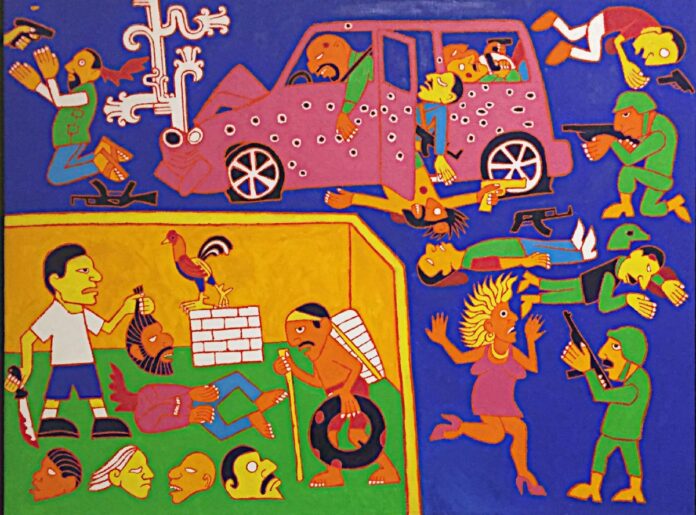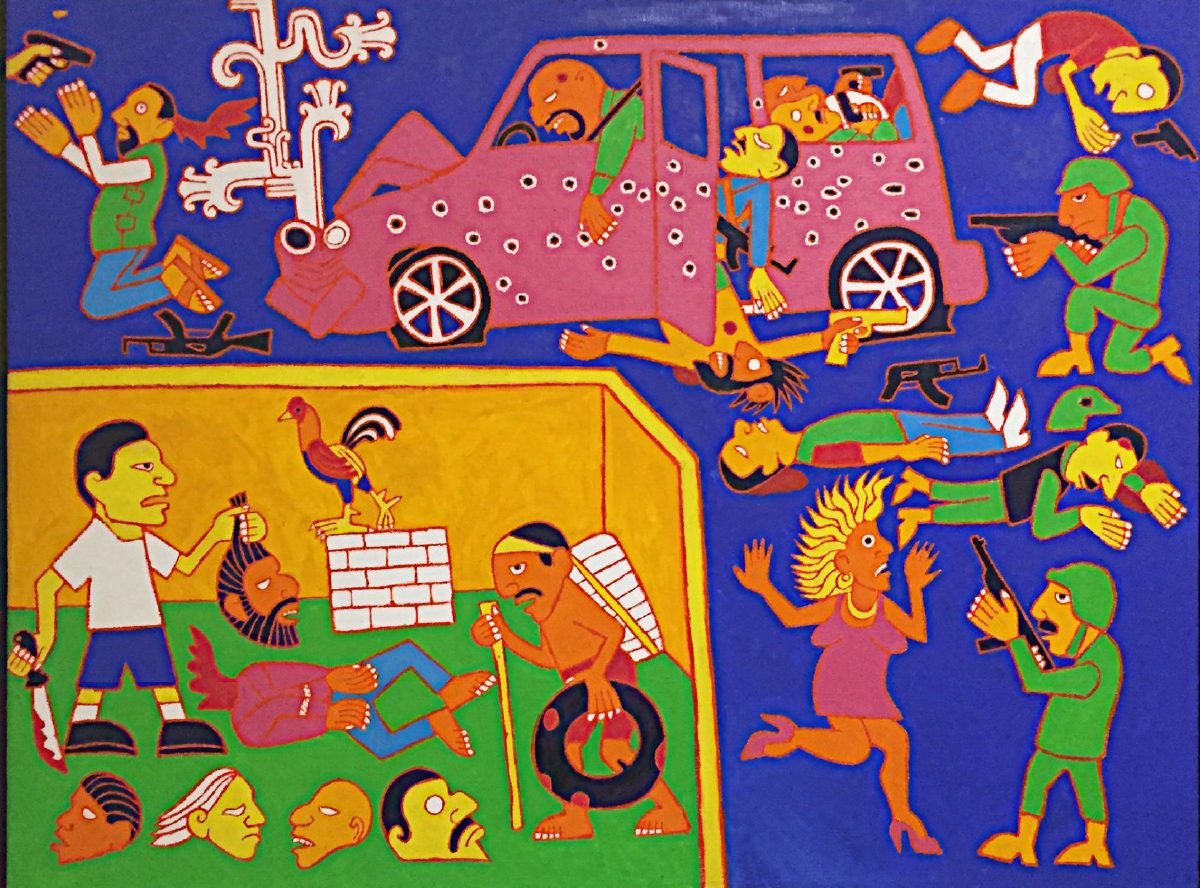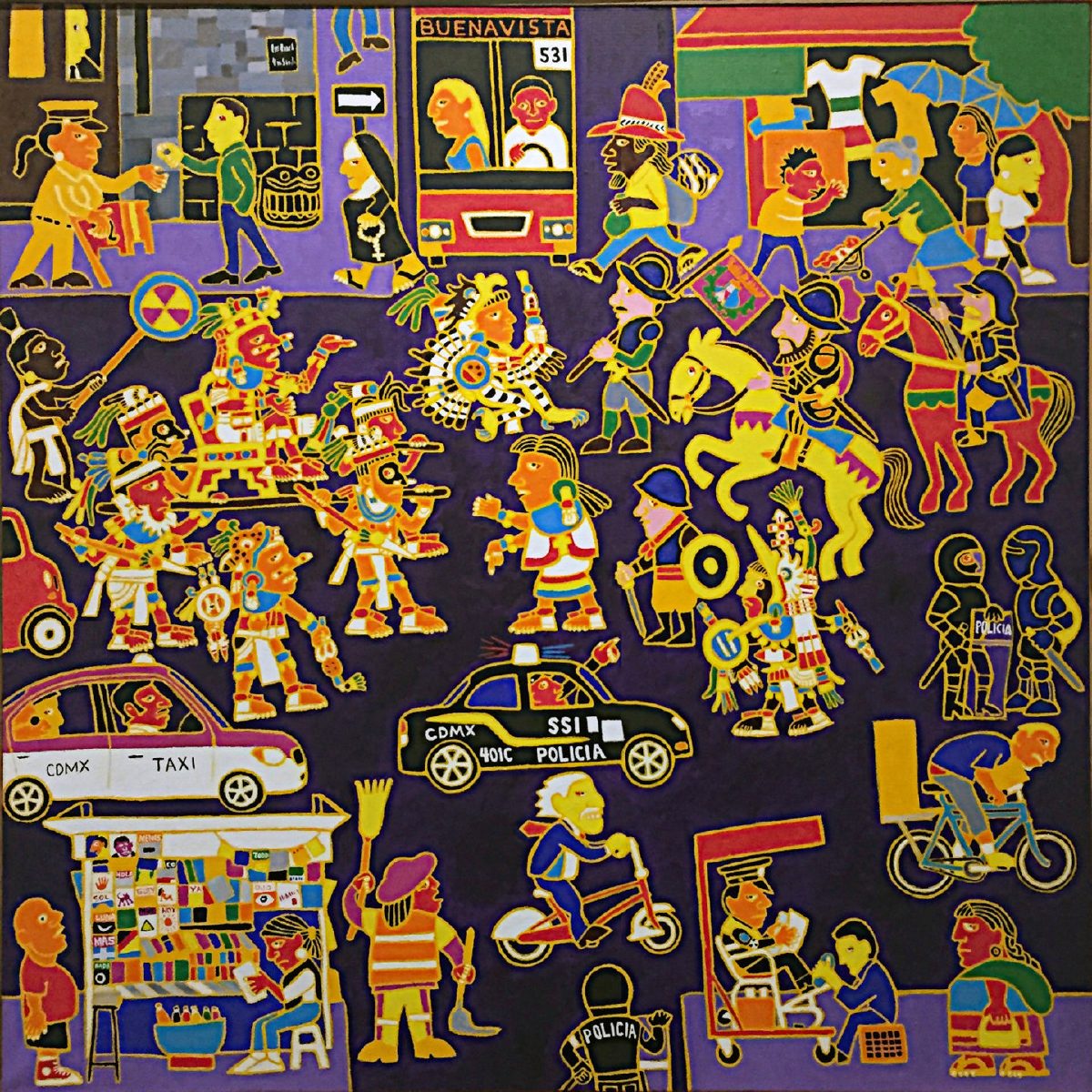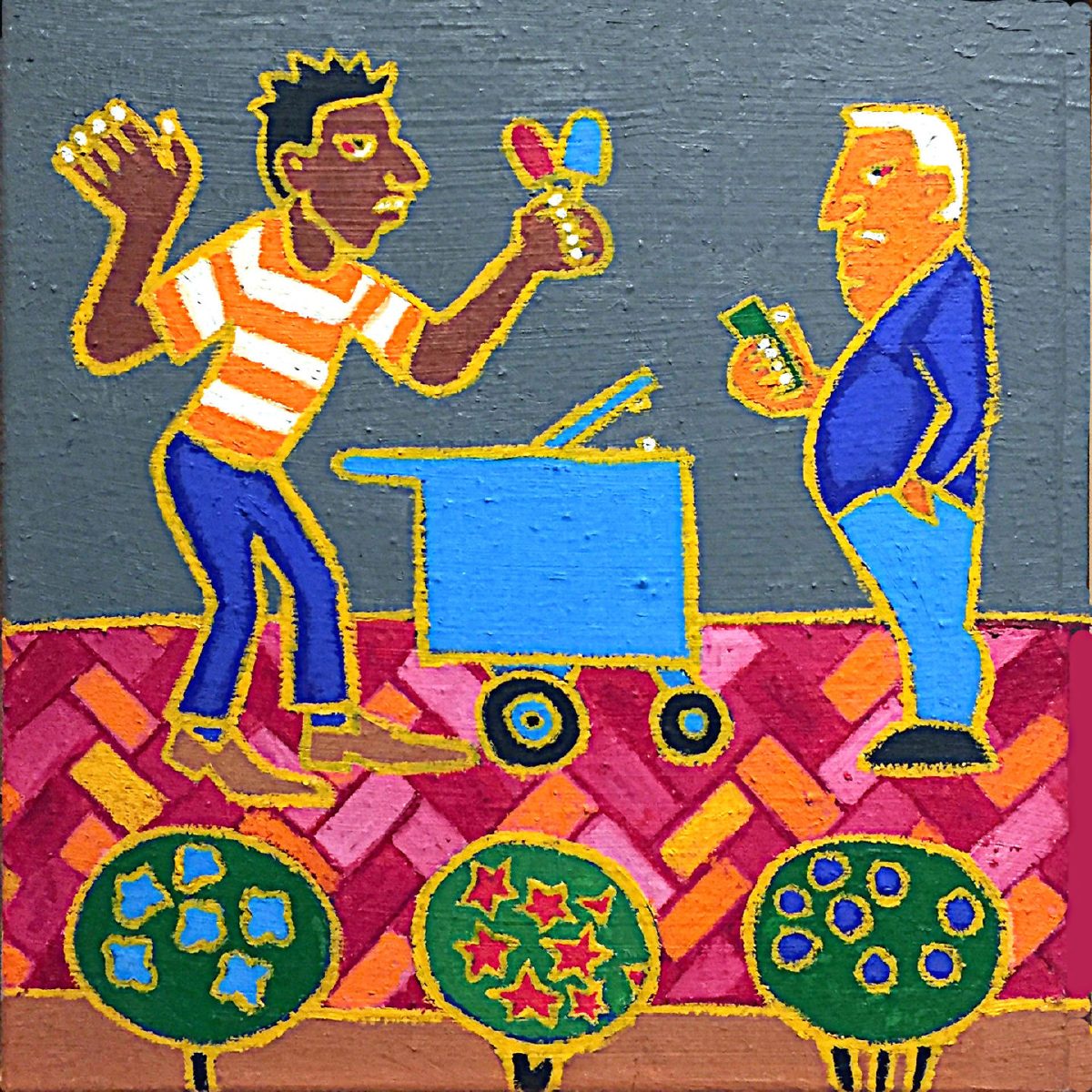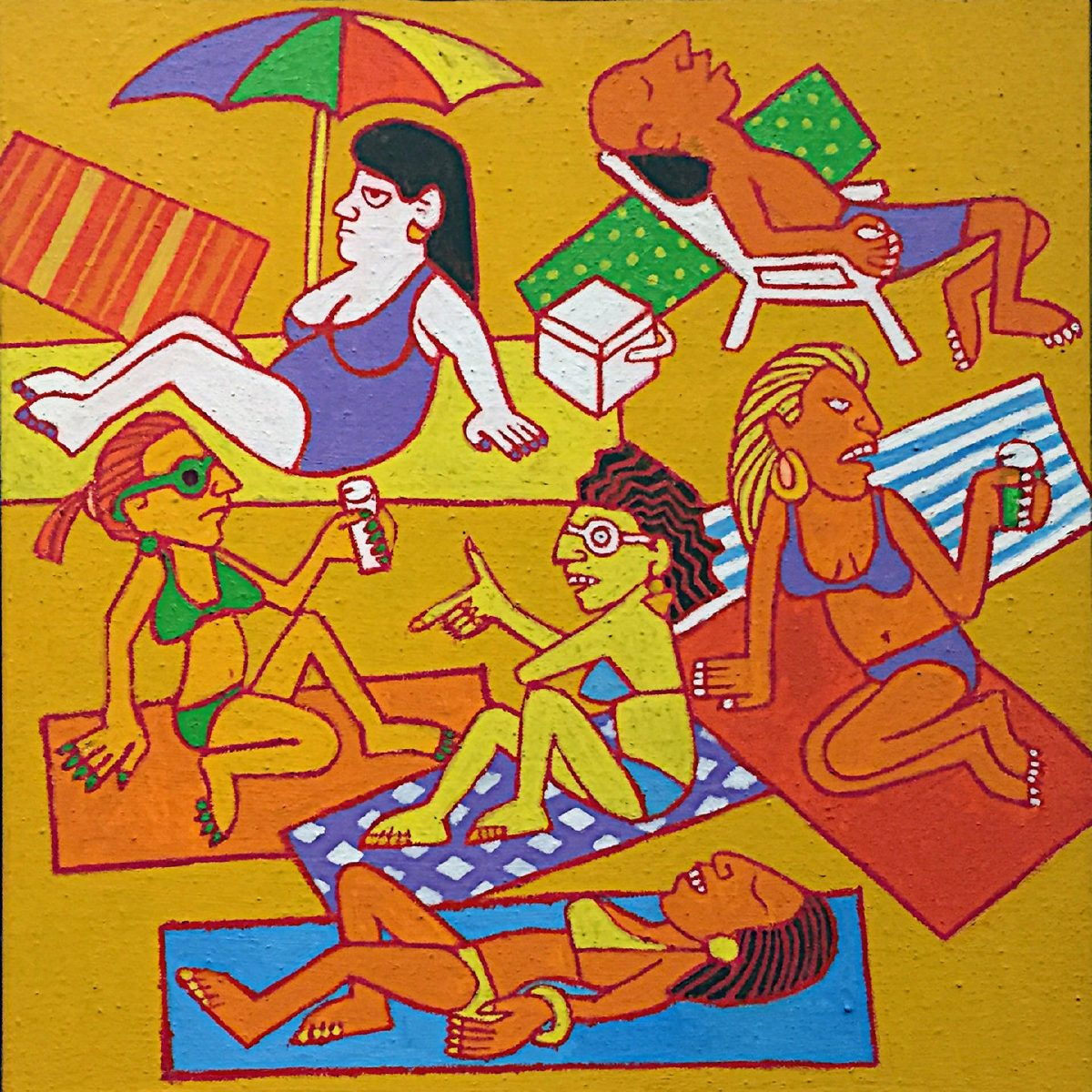BY NANCY MOYER
Always a man with a ready narrative, Mark Clark brings his Mexica characters up to the present in “Modern Times” at Beyond Arts Gallery. When Clark moved to Brownsville from the East Coast, he wanted to create a new style based on the binational fronterizo culture.
Images based on indigenous Mexica and Mixteca codices combined with straight-from-the-tube Washington Color School painting hues met that intention. Initially, he envisioned the Mesoamerican deities in the indigenous codices as fading away in Brownsville, then went about bringing them back to their original power through vivid coloration and exaggerated scale.
But in “Modern Times” Clark retains the figurative style of the codices, creating characters to fit contemporary scenarios. Perhaps this is how Aztec depictions of their history might have looked had they not fallen to the Conquistadores.
The works in this show include simple scenes of life on the border and more complex scenarios reflecting social conflicts. The smaller paintings often serve as studies that reemerge in the more complex compositions. The small “Helado Study” is typical with figures in profile, simplified objects, vivid colors and its flat background disdaining linear perspective.
“I guess I first became fascinated with Matamoros street vendors, their originality, and the great stuff they were selling,” said Clark. “It’s a presentational rather than representational art. You try to make everything in its most readable format.” And readable this art is.
Clark has been doing historical paintings for a few years now, interpreting newspaper accounts of drug cartel skirmishes. The larger compositions are notable in this regard for their narrative layouts; a favorite for Mexican history buffs is “Cortez and Moctezuma.” With this painting, he goes further back in time, referencing the meeting of Spanish Conquistador, Hernán Cortéz, and Aztec Emperor, Moctezuma.
His creation projects how it would play out at a hypothetical reunion. “I’m fascinated by the upcoming 500th anniversary of the meeting of Cortéz and Moctezuma,” he continued, “and I’m just kinda doing a run-up to that, but I didn’t want to do it in a photorealist style. I wanted to make it as though the Aztecs had won the encounter and did the painting using their conventional style. I set it on the corner (the geographical site) where it actually happened, at Avenido Piño Suarez and Calle República del Uruguay. Piño Suarez is one way, and if Cortéz came back for the anniversary, the traffic police would harass him mercilessly. I had to include that, just as a comic aside.”
Another source of inspiration played into this work — a 17th century European landscape painting about the classical fall of Icarus into the sea where nobody pays any attention. Clark uses this inattention to epic events conceit, except for a street sweeper.
A further impressive merging of Mexica and Washington Color School concepts emerge with “Ollin.” In the Nahuatl language, Ollin means immediate movement. Here, Clark combines the Aztec symbol of the centered eye with an American hard-edge abstract painting format, depicting diverse movements and activities within its arcs. The blue represents rivers and red represents land and bridges. Barely visible are strips along the top and bottom edges of the painting referencing La Bastia (the Mexican train), Border Patrolmen, and undocumentados climbing over the wall into Los Estados Unidas.
“Modern Times” is full of observations, interpretations and opinions. Although there is a gentle sense of humor on the surface, some of these works will bite.
Nancy Moyer, professor emerita of art at the University of Texas Rio Grande Valley, is an art critic for The Monitor. She may be reached at [email protected].
Where: Beyond Arts Gallery, 114 North A Street, Harlingen
When: Through Jan. 20, 2018
Hours: 1 to 5 p.m. Wednesday through Friday, 10 a.m. to 5 p.m. Saturday
Contact: (956) 230-2859

